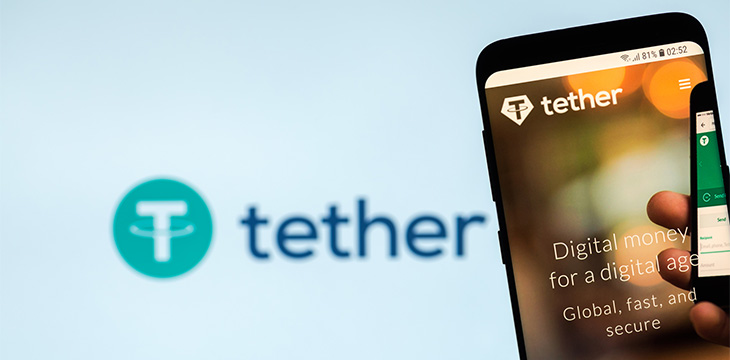|
Getting your Trinity Audio player ready...
|
A U.S. judge has ordered the company behind “stablecoin” Tether (USDT) to produce detailed records regarding USDT’s backing assets, along with information about its accounts at exchanges like Binance, Bittrex, and Poloniex. The order from United States District Judge in New York Katherine Polk Failla is part of a case that’s been ongoing since 2019, where a group of traders sued Tether and accused it of causing over a trillion dollars’ worth of damages to the digital assets market.
The issue of what assets back USDT’s “stable” USD$1 value has dogged Tether and its stakeholders for many years. At launch, it was ostensibly backed 1:1 by reserves of real U.S. dollars. However, its operators have consistently failed to produce satisfactory audits of the system and reserves. Previous investigations by the New York Attorney General’s office revealed that Tether’s backing includes a basket of assets, including cash currencies, other digital assets, and receivables from loans made by Tether to affiliated third parties.
This has led to claims that Tether may be operating a fractional reserve system or that it may even be insolvent. Large “minting” of new Tether tokens has often corresponded to jumps in the BTC price, leading to even more claims that BTC’s unit price comes not from investors’ money flowing into the markets, but from virtual dollars created out of thin air by an entity other than the Federal Reserve.
It has also led to a series of investigations and lawsuits seeking more precise information. The case above is one of those. Tether is a co-defendant in the suit along with affiliated entities Bitfinex, and Digfinex, along with payment processor Crypto Capital and Tether executives, including former CSO Philip Potter.
Plaintiffs in the case are David Leibowitz, Benjamin Leibowitz, Jason Leibowitz, Aaron Leibowitz, and Pinchas Goldshtein, represented by blockchain-specialist law firm Roche Freedman.
The latest request, which the judge granted, seeks Bitfinex and Tether’s complete financial records, along with records of all transactions. Tether had responded by calling the request “incredibly overbroad,” “unreasonable,” “burdensome in the extreme,” and without basis. Defendants also claimed the request was due to the plaintiff’s inability to pursue the case in a timely manner, and to extend discovery as a delaying tactic.
The court disagreed, saying such records were indeed relevant to the case. It remains necessary for Tether to produce records about USDT’s real USD backing in order to perform a forensic accounting assessment of the situation. If Tether is trading with unbacked USDT, and doing so in a manner that inflates the digital asset markets, then it is central to the plaintiff’s complaint.
Any order to provide such detailed records for a forensic assessment is likely bad news for Tether. According to its critics, it simply does not have the documents the court has now demanded. Any documents it produces may finally prove how few actual U.S. dollars are backing Tether’s value.
Bitfinex/Tether rekt.
It's going to be hard to produce documents which don't exist, to prove Tethers were fully backed, which has already been proven to not have been backed by both the NYAG and the CFTC.
Good luck! https://t.co/vkFrSy9xD6 pic.twitter.com/NtTisUYbHS
— Bitfinex'ed 🔥🐧 Κασσάνδρα 🏺 (@Bitfinexed) September 21, 2022
How is Tether still operating?
In 2019-21, the New York Attorney General’s office (NYAG) investigated Bitfinex and Tether’s dealings with a payment processor. The issue was whether the parties had sought to cover up a US$850 million loss.
The investigation did not cover the issue of Tether’s real asset backing, although NYAG Letitia James concluded with the following statement:
“Bitfinex and Tether recklessly and unlawfully covered up massive financial losses to keep their scheme going and protect their bottom lines. Tether’s claims that its virtual currency was fully backed by U.S. dollars at all times was a lie.”
The investigation ended with a settlement of $18.5 million, though without any admission of wrongdoing on Bitfinex/Tether’s part. James also decided not to pursue further charges against Tether’s operators.
Since the requirement to produce detailed backing documents comes as part of the civil suit mentioned above, the evidence would only affect that case. Any further regulatory action against Tether would still need to come from government authorities. This means USDT remains a popular trading asset on digital asset exchanges, with traders “trusting” it as long as it still works.
Tether is used mainly on exchanges and rarely, if ever, as money in the real world, meaning those who hold it does so only temporarily. Until there’s some conclusive action by a government authority and a final decision, this shaky situation will continue.
Follow CoinGeek’s Crypto Crime Cartel series, which delves into the stream of groups from BitMEX to Binance, Bitcoin.com, Blockstream, ShapeShift, Coinbase, Ripple,
Ethereum, FTX and Tether—who have co-opted the digital asset revolution and turned the industry into a minefield for naïve (and even experienced) players in the market.

 12-31-2025
12-31-2025 




